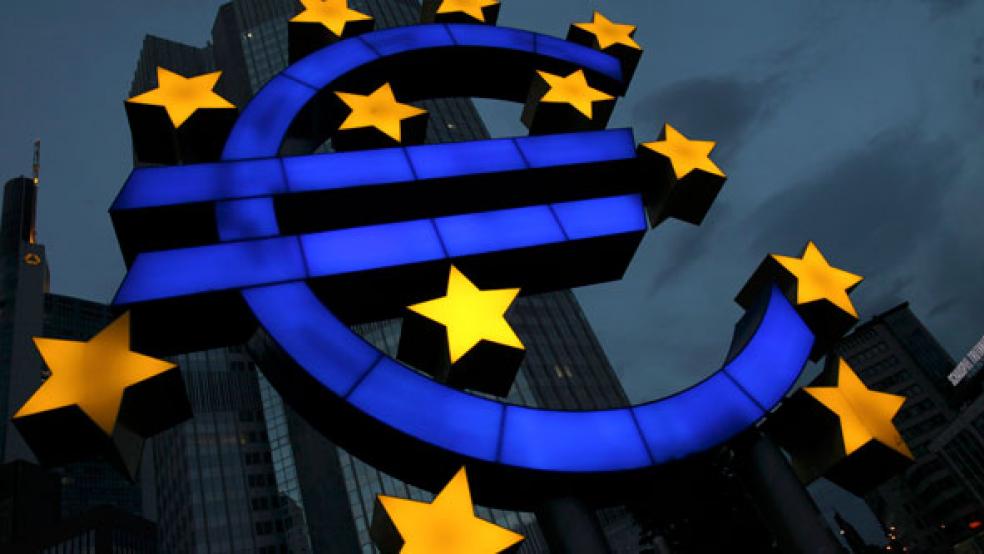The amount of money thrown at rescuing the world economy since the Great Recession began is truly staggering, probably more than $14 trillion, and the financial spigots are still open.
Industrialized and emerging nations pledged another $430 billion to boost the International Monetary Fund's lending power this weekend, doubling the size of its crisis-fighting war chest in case Europe's problems worsen and engulf more countries. Three weeks earlier, European Union leaders set aside $1 trillion for Europe's bailout fund creating a firewall to prevent the euro zone's sovereign debt woes from spreading.
Major central banks haven't finished pumping money into the global economy either. The Federal Reserve meets on Tuesday and Wednesday and the Bank of Japan meets on Friday, and their bias toward monetary easing through bond purchases is likely to remain firmly in place. Japan may even ease again to counter deflationary pressures.
The IMF has recommended more action from the European Central Bank, and the People's Bank of China is seen cutting its bank reserve requirements this year to underpin growth. But can all this money restore growth to robust levels anytime soon?
RELATED: The Socialist Who Can Rattle the Global Economy
Government officials and economists point to the same problem: too much debt. Rescue funds and central bank stimulus measures are just keeping the world economy afloat until the hard and painful work of repairing balance sheets gets done. "The real solution has to do with the fiscal and structural reforms that address the real causes of this crisis, particularly in Europe, but also elsewhere," said Tharman Shanmugaratnam, Singapore's finance minister and head of the IMF's steering committee. "The firewall is absolutely essential, but by itself it is not sufficient, and the real solutions require attention."
In 2009, the IMF calculated that official rescue efforts totaled nearly $12 trillion, and since then the Fed and the ECB have pumped more cash into the economies they oversee. All of this money - equivalent to the annual output of the U.S. economy or roughly $2,000 for every man, woman and child on the planet - cushioned the economic blow worldwide from collapsing house prices in the United States and parts of Europe, bank failures and the steep contraction in business and household spending.
Almost four years later, the world economy is expanding at a moderate pace of 3.5 percent GDP growth this year, by IMF estimates, in line with its average rate of 3.4 percent between 1994 and 2009. The U.S. Commerce Department will report its initial estimate of first-quarter economic growth on Friday, and economists polled by Reuters have a median forecast of 2.5 percent growth in GDP, down from 3.0 percent the prior period.
To quicken the pace of growth, the increasingly urgent message delivered to finance ministers and central bankers attending three days of IMF/G20 meetings that wrapped up in Washington on Saturday was: Get on with the job of paying down the debt.
HARD WORK AHEAD
The size of that task is daunting. In the United States, the epicenter of the credit crisis, $8.3 trillion in household wealth evaporated as housing prices collapsed. While U.S. households are making progress, buoying hopes for a healthy consumer spending rebound this year, David Resler, chief economist at Nomura Securities International, is less optimistic.
He has studied U.S. consumer debt piles and concluded a long and arduous climb still lies ahead. "The lessons of history suggest that the remaining process of healing will likely be measured in years rather than quarters or months."
As for governments, the Organization for Economic Cooperation and Development said since 2008 their debt loads have swollen to 100 percent of GDP on average in advanced economies. Reducing public debt to 50 percent of GDP in 2050, considered a manageable level, would require immediate fiscal tightening equivalent to 12 percent of GDP in Japan, and 8 percent in the United States and the UK, it said. "In many countries, just stabilizing debt, let alone bringing it down to a sustainable level, will be a major challenge," the OECD said.
Governments already face huge political problems in deciding between spending cuts, tax increases and structural reforms that spur faster economic growth as the route to fiscal probity - witness the virtual stalemate in the United States and riots in Greece. Austerity programs have won out so far, but that may be hitting their limit in countries of strong public protest.
OECD and IMF studies have found a mixture of cuts, reforms and tax increases is best. And an IMF model showed that fiscal tightening equivalent to 1 percentage point of GDP for countries with debt loads over 60 percent would actually lower growth in the first year, wiping out any improvement to the debt ratios.
Italy and Spain are getting a taste of this problem. Both have raised their debt projections in recent weeks, despite aggressive budget consolidation plans, spooking markets. In fact Goldman Sachs economists Jose Ursua and Dominic Wilson have found that all too often countries cannot tame huge debt piles through fiscal policies and faster growth alone.
They studied public debt loads since 1875 for 20 countries through war and peace. They found it takes longer to cut debt accumulated in peacetime, and that in 40 percent to 55 percent of cases, it took a mixture of inflation above 5 percent, very low returns on government debt, or default to erase the problem.




